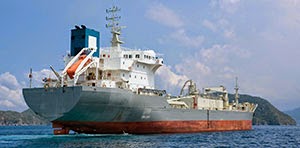Hi Direct approach: improving wind turbine drivetrain reliability.
Offshore wind turbines have been plagued by reliability issues that have driven up costs and damaged confidence in the technology. But could a new generation of drivetrain technologies change this?
For nearly a year, people gazing across Scotland’s Firth of Forth have been able to catch sight of an impressive feat of engineering: the world’s most powerful offshore wind turbine. The 7MW monster — the first of its kind — has blade tips that tower 196m above sea level, sweeping an area twice the size of the London Eye.
The majestic structure is part of a bigger plan to make use of the UK’s offshore wind capabilities. The total offshore generating capacity in UK waters provides around eight terawatt-hours (TWh) of electricity each year, enough to power around two million homes. Industry estimates suggest that by 2020, offshore wind will supply between eight to 10 per cent of the UK’s electricity annually.
One way to overcome reliability issues is to take the direct-drive route. That is what Alstom has beenm attempting with its 6MW Haliade WTG wind turbine.
The technology is giving the UK a chance to conquer a growing global market. Offshore construction costs are high, but fairly predictable. Without the same size constraints, wind turbines at sea provide economies of scale. They also produce far more energy than their land-based equivalent, with offshore turbines reaching 3–8MW of capacity. These energy gains, however, come at a cost when it comes to maintenance.
A wind turbine’s drivetrain provides the biggest headache for engineers. ‘They are a classic issue in the wind industry,’ said Daniel Castel, offshore platform director at Alstom. ‘Lots of effort has been made to improve the reliability of the gearboxes but the truth is that there are still some issues that prevent the achievement of a lifetime solution. This is especially critical for offshore where the operating expense is so high.’
’Haliade WTG is a direct-drive solution featuring our pure torque layout that allows for sharp control of the loads that go through the power train.
Daniel Castel, Alstom.
To avoid excessive damage, Ricardo has come up with a solution dubbed MultiLife, which involves rotating the fixed inner components so that wear take place throughout the full circumference of the bearing rather than just on a small section.
Historically, gearboxes have suffered from failures in both the planet bearings and the high-speed shaft bearings. The high-speed shaft bearings, which undergo huge forces, can often be replaced on site, but any planet bearing failure requires removal of the gearbox from the turbine for repair elsewhere. The downtime this creates means that close to 25 per cent of a wind farm’s maintenance costs are linked to gearbox failures.
‘Individual offshore turbines are now pushing well above 5MW capacity, so it is crucial to design and build in the highest standards of reliability from the outset,’ said Paul Jordan, Ricardo’s global head of clean energy and power generation. ‘We need to avoid the risk of high costs of failure and remedial replacement of major components such as gearboxes.’
Jordan’s team has been working on a gearbox and drivetrain design for the Samsung Heavy Industries 7MW offshore wind turbine being tested in Scotland. The mammoth structure is designed to gather energy in some of the world’s roughest oceans. It has a rotor diameter of 171.2m with a hub that stands around 110.6m above sea level. The rotor tip moves at 95m/sec, meaning the drivetrain has to handle torque of 6.9MNm.
‘The most challenging aspect was the six degree of freedom dynamic analysis of the full drivetrain,’ said Jordan. This analysis allowed the team to subject each piece of the gearbox to finite element (FE) analysis testing. ‘It was important for us to consider gravitational and assembly loads as well as those due to operation,’ added Ricardo’s chief engineer for the project, John Stanton.
The team’s simulation revealed wear on the inner bearing concentrated over a small arc of around 40˚. The team came up with a solution — dubbed MultiLife — which involves rotating the fixed inner components so that the wear would take place throughout the full circumference of the bearing. This, the team claims, extends the life of the bearing by up to five times and avoids the bearing damage reaching a critical condition.
But to achieve more gains in reliability, Ricardo claims new innovations are needed. ‘There are limits to the optimisation of drivetrains that can be achieved through intensive simulation,’ said Jordan. ‘However, there are further step-changes that can be achieved through the adoption of advanced technologies that we have developed from our experiences in other, more mature industrial sectors such as off-highway equipment, motorsport and
road vehicles.’
Ricardo’s TorqLife technology is claimed to improve wind turbine architectures susceptible to damage from loads such as strong gusts or emergency stops.
One way to overcome the reliability issues is to take the direct-drive route. That’s what Alstom has been attempting with its 6MW wind turbine, dubbed Haliade WTG. ‘We do not have any gearbox in the drive train,’ said Castel. ‘It is a direct-drive solution featuring our pure torque layout that allows for sharp control of the loads that go through the power train.’ With no gearbox coupled to the generator, the turbine consists of fewer rotating parts, increasing reliability.
Ricardo has also developed a technology, named TorqLife, which it claims improves wind turbine drivetrain architectures susceptible to non-torque loads transmitted into the gearbox. The same potentially failure-inducing mechanism can also affect the generator for direct-drive architectures. This load can be created under certain operating conditions such as gusts or turbulent wind conditions and fault conditions such as grid loss and emergency stop.
TorqLife uses a dual-function coupling that avoids drivetrain overloads. It is based on an arrangement of hydraulic cylinders between the rotor shaft and gearbox, or direct-drive generator, which are able to isolate non-torque loads. Ricardo claims this innovation offers the prospect of enabling wind turbine drivetrains to survive in the harshest conditions for their full lifetime.
‘What makes our job really rewarding is that our endeavours will help ensure that a much greater proportion of renewable power is delivered to the grid, and at a much lower cost than would otherwise be the case,’ said Jordan. If the UK is to make the most of its offshore wind power potential, then technologies such as this will be vital to ensuring investors’ support for the industry. Addressing concerns over reliability could also help win over those who remain on the fence over renewable’


.jpg)






